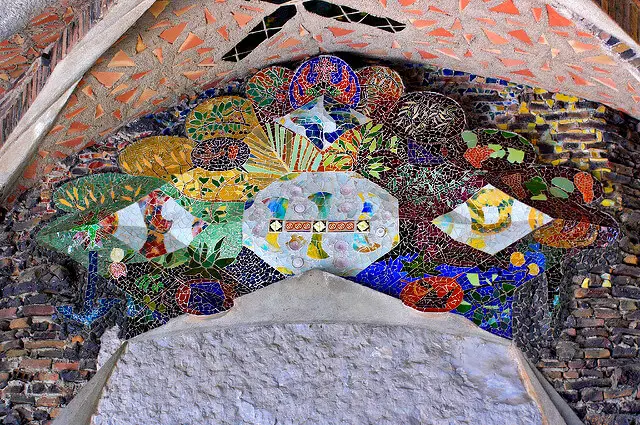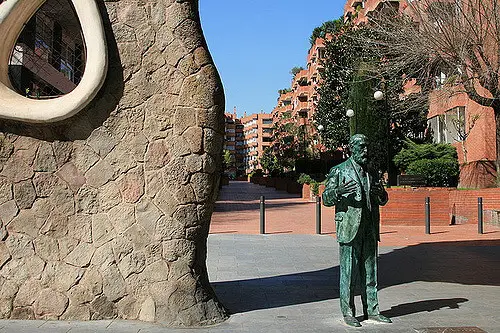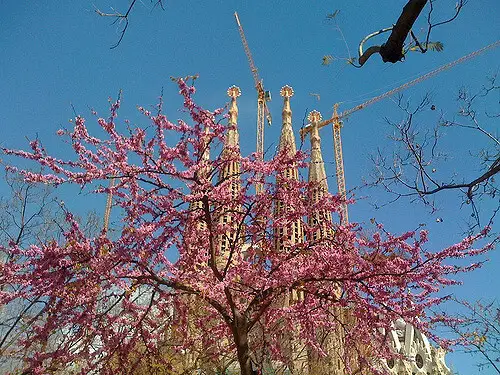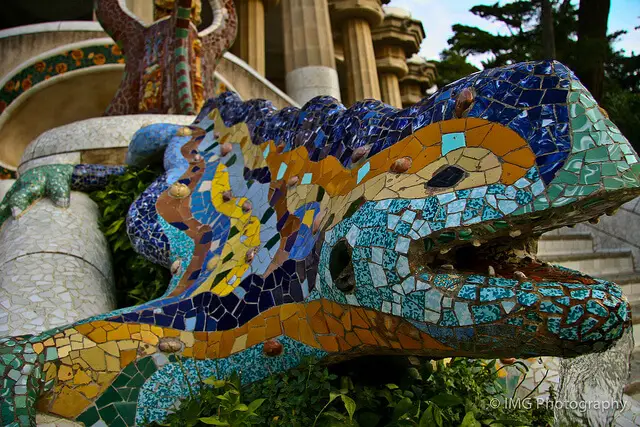Barcelona can symbolically be considered another name for Antonio Gaudi because whichever direction you head to in this gem of a city, you are most likely to run into one of his masterpieces! Antonio Gaudi was an architect, interior designer, thinker, innovator and a magician of sorts who could turn waste ceramics into world-renown monuments, the likes of Casa Vicens or the much sculpted UNESCO-recognized La Pedrera. Gaudi gave Barcelona its culture and soul, by building upon its past and enhancing its present. That goes without saying, to the less familiar ones, a prior research into his life and works will evoke within you an immense love and respect for the man who kick started the Modernista Era; especially so when you are face to face with his legacies in person. The Gaudi Exhibition Center was inaugurated in September 2015 as a lasting tribute to his contributions, spanning nearly a century of research material into his innovative thought process and creative ideas that gave rise to his creations. The Exhibition Center is located in the medieval Pia Almonia building of the Museu Diocesà beside the important Barcelona Cathedral. The museum serves to inspire modern artists and innovators who can learn from his methods as a base to build a better future in the field of art and architecture.

Here are Top 10 interesting tips to consider prior to visiting the Gaudi Exhibition Center:
1) Book your Tickets
Getting hold of Gaudi Exhibition Tickets has never been more easier than now. Heading out to one of the most visited places in Barcelona may seem a daunting task at first but you can erase all the usual expected troubles of long queues through online booking at The Gaudi Exhibition Center website: https://tickets.gaudiexhibitioncenter.com ; or a plethora of other websites that offer similar options. General Entry tickets are priced at € 15 for adults, € 7.5 for children of age of 7 upwards and free entry for kids below the age of 7. Specialized options are available at €17 for an unguided tour with VR Entry as well as a guided tour for €20. Holders of a pre-purchased “Barcelona Pass” can access the site for free, which can prove much discounted if you plan to visit other sites as well. The Barcelona Pass is a discounted pass that offers free access to nearly 20 important sites across the city once purchased. You can obtain your Barcelona Pass here: https://www.barcelonapass.com/
2) Audio Guided Tour
For General Entry visitors who feel they can guide themselves, the museum makes life much easier with the special Audio Guided tour available in different languages: Catalan, Spanish, English, French, Italian, German, Russian, Chinese, Korean and Japanese. So just put on a pair of headphones provided by the center and walk your way around with Gaudi!
3) Virtual Reality Activity
For an extra €2, you can put on a pair of Samsung’s Gear VR Glasses provided by the center and travel back in time to meet Gaudi himself. This can be considered an innovation on Gaudi’s 3-d ideology, except that it is one a virtual plane. Delve into the depths of the Colònia Güell, an unfinished crypt by Gaudi that once accommodated worshippers in times past and relive his experiences.
– Multimedia Exhibitions:
4) Gaudí: death of poor, burial of king

Watch out for one of these temporary exhibitions at the center that commemorates the 90th Death Anniversary of Antonio Gaudi, his tragic loss and mourning by the people of Barcelona. What marks his death as interesting is the fact that he was struck by a passing tram on the way to church and was mistaken for a beggar, owing to his shabby clothes. His being taken to a hospital for the poor, his subsequent discovery and refusal to be transferred to a privileged hospital as a display of brotherhood with masses and his subsequent death and pompous burial by the citizens of Barcelona who greatly loved and cherished him, all form an interesting composition of this tragic event. Thus, the saying, “Gaudi died like a poor man, but was buried like a King.” Original documents such as the report of his admittance into the Hospital de la Santa Creu, photos from his burial and other major artefacts are on display at the center to help Gaudi enthusiasts understand his life and works better.
5) Quest “by Gaudi”

This quest room offers a different multimedia interactive take on the life of Gaudi through a program “The Secret of Gaudi”. A game of sorts, this detective story focuses on the events that marked the Spanish Civil War, when rebels who help power in the city, destroyed much of his extensive models and drawings. Visitors to this room, enter a replica of Antonio Gaudi’s original studio and by solving certain historical mysteries, their objective is to find the hidden cache of his drawings. A fun filled experience that gives you a feel of the bygone turbulent times.
6) Works Displayed
A major portion of the displayed items to look out for include scenographies, 180o preface audio visual installations, interesting holograms, original 3d models by Gaudi himself as well as replicas and a vast collection of religious iconographies and paintings. Some of the important religious artworks on display to look out for are : Fresco paintings by Sant Salvador de Polinya (Roman), Retablo of Sant Sever by Pere Nunyes i Enric Fernandes (Renaissance), Wooden polychrome sepulchre of Santa Maria de Cervello (Gothic), Santa Cena by Antoni Viladomat (Baroque), etc. The stunning 3-D models are miniatures of actual monuments you may come across in the city which were built based on the ideas sculpted in these models, including elements from the unfinished Sagrada Familia and a complete miniature version of the Còlonia Güell, before portions of it were destroyed. Stained glasses, original benches from the crypt of Còlonia Güell of unique proportions, tools used by Gaudi to implement his works and other personal artefacts like old phonographs, etc., are on display at this site.
7) The Amazing Kaleidoscope
One of them most salient and innovative Modernist features of this site has to be stunning kaleidoscope found on the first floor of the building along with a larger kaleidoscope on the topmost floor of the building. This feature offers a very interesting play of mirrors and shapes. A must see!
8) Spot Gaudi’s Dragon
The dragon of Saint George has to be one of the most unique features of Barecelona city, owing to an old myth concerning the Saint’s intercession in saving the life of the Cleodolinda maid from the clutches of a dragon. Iconographies depicting the dragon have been used by creative architects, the likes of Josep Vilaseca and Cadafach himself. Yet, it was Antonio Gaudi who innovated the iconic dragon in the most thought-provoking ways, keeping in line with Catalonian culture. A prime example would be the roof of Casa Battlo, said to resemble the spine of the dragon being impaled by the cross of St. George. Similarly , a mysterious ceramic mosaic dragon known locally as ‘El Drac’ is to be found at this center. So go look for it!

9) The Building itself
While engrossed in admiring the various exhibits at the center, don’t forget to spare a glance and marvel the very structure where the exhibition is displayed. A building as old as the earliest times of European history itself, it still has a section of the original Roman wall. The earliest reference to this building dates to 955 AD when it served as a residence for canons of the order of St. Augustine. It was later demolished and rebuilt. The Diocesan Museum is aptly named for having later functioned as a 11th-century almshouse, where free food was distributed to the destitute of the city and later on as an ecclesiastical residence in the 15th Century. The Casa de la Pia Almoina also known as the Casa de la Canonja is built in the traditional Gothic style while the eccelesiatical residence portion was built in the Renaissance style around the 1546. The building was again redesigned in 1989 and thus is a menagerie of different elements spanning different periods.
10) Gift Shop
Don’t forget to take with you a souvenir from this center as well. There is a tiny but wonderful gift shop nestled in a corner of the center that has accessories, printed t-shirts, bags, etc. which can help you cherish the memory of your visit. If you want to record your visit, feel free to bring along your camera. This is one of the few museums that lets you take photographs in and around!
